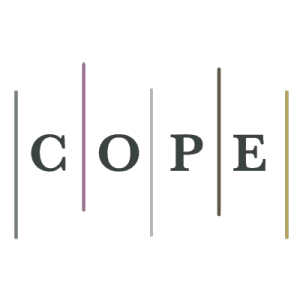2389 Views | 6601 Downloads
Working with different text types in English and Arabic: Translation in practice
Aladdin Al Zahran
Introduction
The 1970s and 1980s witnessed the emergence of the functionalist approaches to translation studies, signalling a departure from linguistic approaches with their narrow focus on units below the text level, and transcending the effect of such smaller units by shifting the focus to the rhetorical purpose of the translated text (Munday, 2001, pp. 73, 76). This period witnessed the publication of a number of seminal works on text as a unit of analysis; foremost among these were Katharina Reiss’s (1977/1989) text types, Beaugrande and Dressler’s (1981) text linguistics and Christiane Nord’s (1988/1991) text analysis. Ever since these groundbreaking works were published, this emerging paradigm proved enormously influential as it has largely informed and significantly contributed to research on translation theory and praxis. The rise in the 1990s of the adjacent and equally influential domain of discourse and register analysis came as a natural and logical outcome, although it had its roots in the Hallidayan model, which dates back to the 1970s. Hatim and Mason’s Discourse and the Translator (1990) and The Translator as Communicator (1997) stand as prominent examples of the application of discourse and register analysis to translation practice. So does Mona Baker’s In Other Words: A Coursebook on Translation (1992) with its subtle treatment of equivalence at the textual, pragmatic and, in later editions, semiotic levels.
It is against this background that the pedagogically-oriented volume under review here is to be read. As the title clearly indicates, the edited volume is intended to be an exercise in the translation of different text types, although we learn from the first chapter that the focus is restricted to ‘informative texts’ (p. 1) or, in other words, texts distinguished based on subject matter, field of discourse (Crystal & Davy, 1969) or domain (Beaugrande & Dressler, 1981). This focus on informative texts does not, however, preclude a treatment of other, mainly persuasive, text types manifesting in two ways. The first occurs within the discussions of the stylistic, pragmatic and technical aspects of media and political and news texts in Chapters 4 and 5, respectively. The second surfaces in the use of appellative (e.g. Application for Release) and instructive texts (e.g. Text 2: Instructions: Over-greasing Bearings) in the practice sections of Chapters 3 and 6, respectively.
The volume reflects the sum total of the contributors’ considerable expertise and experience as translator trainers and educators who hail from different academic institutions and educational contexts. Thus, it forms a welcome addition to Arabic–English translation training, as it could potentially be useful for translator trainers working with students at their early stages of development, and for self-practicing students at a later stage. No wonder, the language used in the book is easily accessible and fit for the purpose of the book as a training manual.
The volume is divided into six chapters, all of which deal with one common theme, that is, tackling the methods, techniques and strategies to be potentially deployed by the translation student in handling texts of various fields of discourse and addressing problems of language and culture. Each chapter deals with texts in a certain field of discourse, albeit with some overlap, with text types ranging from legal, scientific and medical through media, political and news to technical texts. The other common aspect is that each chapter begins with a brief theoretical presentation touching on various related concepts and issues such as textual features or technical aspects of certain text types and some translation strategies with the exception of Chapter 4, which provides a more detailed treatment of media and political texts, and to a lesser extent Chapter 6. Each chapter also ends with a set of quizzes, questions, exercises, glossaries or sample source texts along with their translations.
The first three chapters were written by Bahaa-eddin Hassan, Editor of the volume. In Chapter 1, titled ‘Basic Concepts’, Hassan briefly introduces the topic and outlines the learning objectives of the volume as a whole. Hassan then moves on to present a brief discussion of different approaches to equivalence, Hallidayan register analysis (field, tenor and mode), text typology and register and genre. The chapter ends with a quiz asking questions on the theoretical concepts presented.
Chapter 2 is titled ‘Legal Texts’. In this chapter, Hassan discusses features of legal texts in terms of legal terminology, formulaic deictic expressions, long and complex sentences and modals such as ‘shall’. The discussion then moves to equivalence and strategies before it presents samples of civil, international and UN documents and their translations along with bilingual glosses extracted from the source and target texts provided.
In Chapter 3, which is titled ‘Scientific and Medical Texts’, Hassan refers to such features of scientific texts as simple structures and sentence ordering, explicitness, objectiveness and impersonality. A discussion of strategies to be deployed when handling scientific texts follows. A number of scientific and medical source texts and their translations are then presented, followed by a discussion of derivational morphemes that help in deriving medical vocabulary and terminology and a tabular presentation of the symptoms and known diagnoses of a number of diseases and health conditions in English and Arabic.
Chapter 4 is titled ‘Media and Political Texts’. Svetlana Tyutina provides a detailed treatment of the challenges inherent in translating media and political texts arising from stylistic, structural, pragmatic, cultural and lexical aspects specific to the genres through which this text type may be realized. This is because sound knowledge of such peculiar features as well as application of established translation techniques, strategies and procedures are deemed essential for a successful translation of media and political texts. The chapter is followed by a number of exercises containing questions on the theoretical part and practical tasks.
In Chapter 5, titled ‘Translating News’, Kais Kadhim gives a brief discussion of such technical aspects of political texts as persuasion, reasoning and deceit or hustling and presentation of strategies that could be used in translating news. This is followed by a quiz and samples of source and target texts and questions on some samples.
In the final chapter, titled ‘Technical Texts’, Klara Garamszegi deals with some features of technical texts, including logical sequence of utterances, specialist terminology, specific sentence patterns, impersonal style, and objectivity, although it is stated that the form of technical texts is secondary and functionality and content are of paramount importance. The chapter ends with a presentation of sample technical texts accompanied by bilingual glosses and a table of abbreviations in the field of petroleum industry.
The scholarly apparatus is served through a table of contents, footnotes, reference sections following each chapter, tabular presentations of certain types of material, an index and notes on contributors.
Finally, the importance of the practical exercises’ sections cannot be overestimated although they would have been more helpful for potential students if they had been supported by sample text analyses and highlights of the main procedures involved and arguments cited in analysing and translating texts of a given type and genre. This is particularly essential as it would have served as a practical application of the theoretical presentation in the first part of each chapter. This is also all the more so because the methodology adopted in the book is that of textual analysis. A demonstration of the implementation of such approach by an expert, in this case the author, would have thus provided the potential learner with much needed and effective practice in this area, especially if the book was used as a self-practice manual as stated above.
In a similar vein, although some chapters refer to some of what might be considered as classics in the field of text typology and textual analysis, the discussions rarely draw upon more contemporaneous treatments of the topic. Nor do they, with the exception of Chapter 4, provide the kind of desired in-depth treatment of textual features and analysis, which would have otherwise provided a more enriching and rewarding learning experience for the intended readership. I would have very much liked to see the influential textual analysis by Nord (2005) featuring in a sample text analysis. This would have provided the intended users with the academic rigour necessary for effective text analysis.
Moreover, overlap and hybridity of text typologies are highly probable (Hatim, 2001, p. 264). Therefore, the sample texts and translations given in the exercise’s sections would have provided a more enriching experience had they contained some explanations and labelling of the distinctive features and landmarks that potential learners should consider for clues on text type, genre, text organization, context, message, purpose or communicative function, intended audience, etc.
On occasions, the translation strategies discussions and sample practice texts would have been more rewarding if they had been supported by relevant references and sources, which would provide the potential learner with the opportunity for further reading if ever the need arose.
Nevertheless, as mentioned earlier, the book could prove a useful training manual on Arabic–English translation of different text types for both the translator trainer and the self-practicing student.
Download Full PDF



